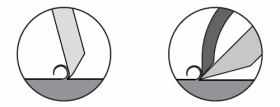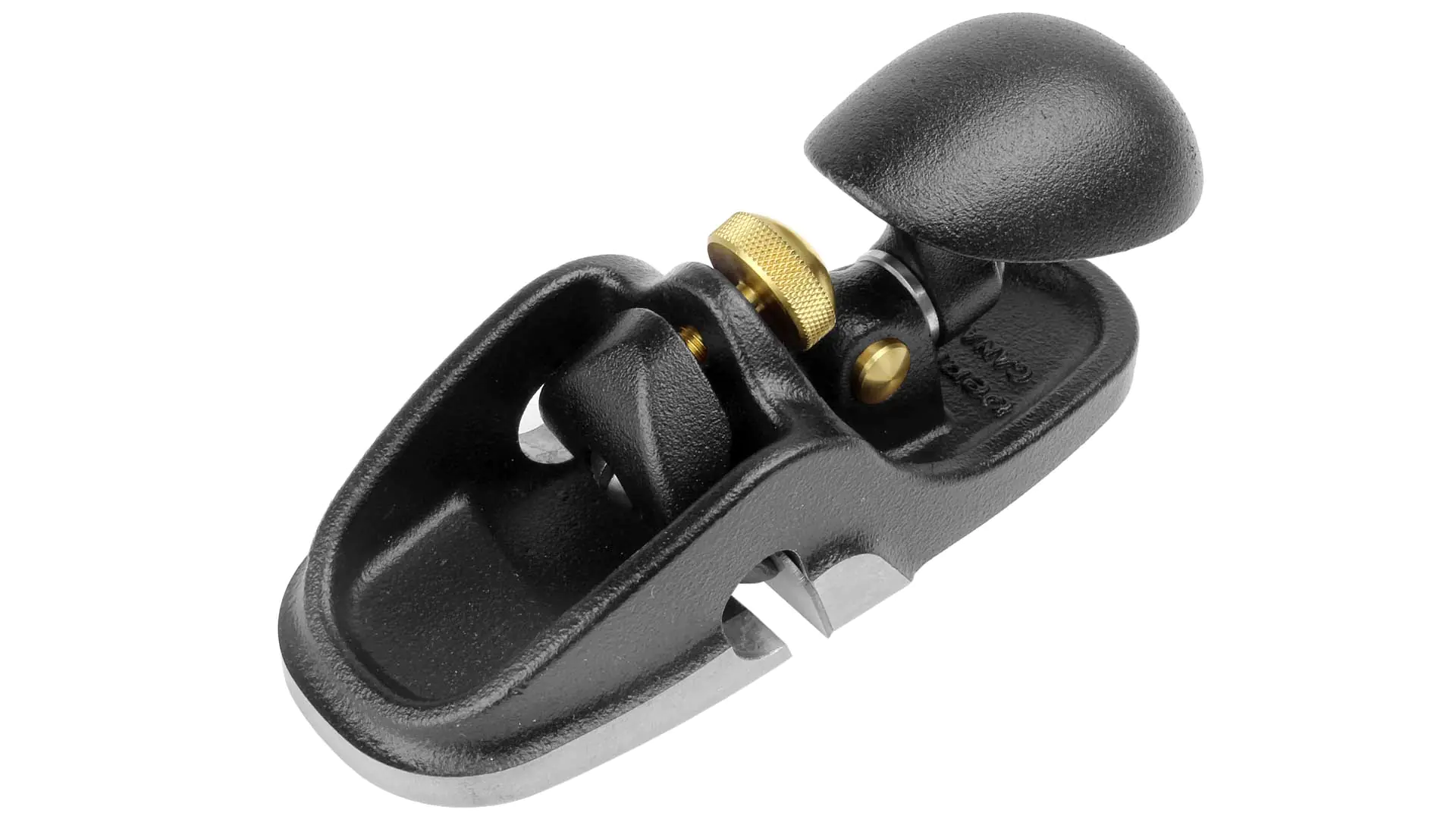February 13, 2025
Instructions - how to use our Tools
Small Drawknife Plane VERITAS
This small drawknife plane is designed for the finishing of small and smooth wooden surfaces. It is particularly suitable for smaller areas with opposing grain in larger surfaces.
This drawknife plane is used when the surface has already been prepared as well as possible with a smoothing plane. However, it does not replace such a smoothing plane in any case. Instead, it replaces the sanding that is usually done before applying a varnish or oil. Since a drawknife plane cuts the wood fiber rather than tearing and pressing it down, the wood grain is much better highlighted than when using sandpaper.
This small drawknife plane is designed for one-handed use and fits very well in the hand. It can be held in various ways, either with the usual grip and full pressure or sideways or from behind in a wrist-friendly manner in the case of adjacent edges on the workpiece.
The 51 mm wide and 1 mm thick blade is as wide as the plane body, allowing for clean and precise cuts even on inside edges. The blade can be easily pushed through with a screw, so it is slightly curved. This prevents the blade edge from leaving unsightly grooves - especially important when working on wide surfaces. The sharpening angle of the iron bevel is 45°, a good angle to easily create a burr.
The frog (the iron holder) holds the iron at a negative angle of 20°, ideal for all typical drawknife work. All edges that come into contact with the hand are rounded to ensure maximum comfort while working. The plane body is 133 mm long and weighs approximately 680 g.
Note: Since the iron is as wide as the plane body, fingers may come into contact with the sharp corners! If you find this uncomfortable, you can easily round off the corners - with a file or sharpening stone.
This drawknife plane is used when the surface has already been prepared as well as possible with a smoothing plane. However, it does not replace such a smoothing plane in any case. Instead, it replaces the sanding that is usually done before applying a varnish or oil. Since a drawknife plane cuts the wood fiber rather than tearing and pressing it down, the wood grain is much better highlighted than when using sandpaper.
This small drawknife plane is designed for one-handed use and fits very well in the hand. It can be held in various ways, either with the usual grip and full pressure or sideways or from behind in a wrist-friendly manner in the case of adjacent edges on the workpiece.
The 51 mm wide and 1 mm thick blade is as wide as the plane body, allowing for clean and precise cuts even on inside edges. The blade can be easily pushed through with a screw, so it is slightly curved. This prevents the blade edge from leaving unsightly grooves - especially important when working on wide surfaces. The sharpening angle of the iron bevel is 45°, a good angle to easily create a burr.
The frog (the iron holder) holds the iron at a negative angle of 20°, ideal for all typical drawknife work. All edges that come into contact with the hand are rounded to ensure maximum comfort while working. The plane body is 133 mm long and weighs approximately 680 g.
Note: Since the iron is as wide as the plane body, fingers may come into contact with the sharp corners! If you find this uncomfortable, you can easily round off the corners - with a file or sharpening stone.
With a wooden mallet, alternately strike the two sides of the hammer head as shown, until it loosens. Many small and light strikes are better than a few heavy ones! At the moment of falling out, a soft surface should be present.






